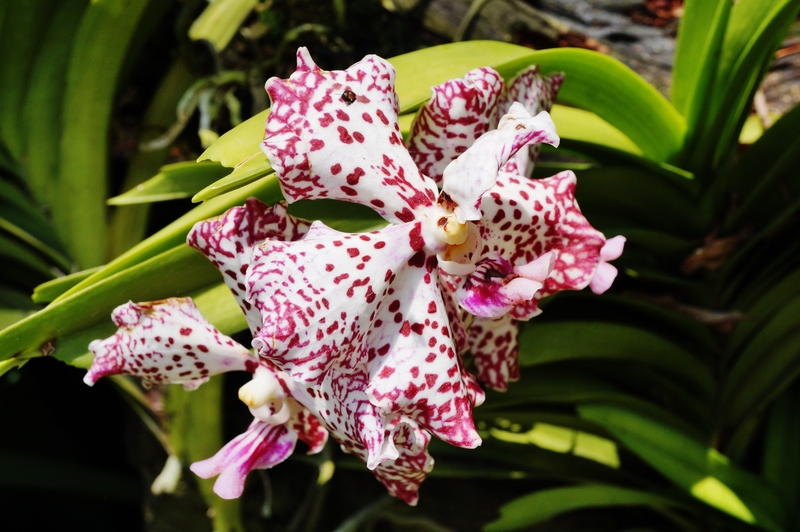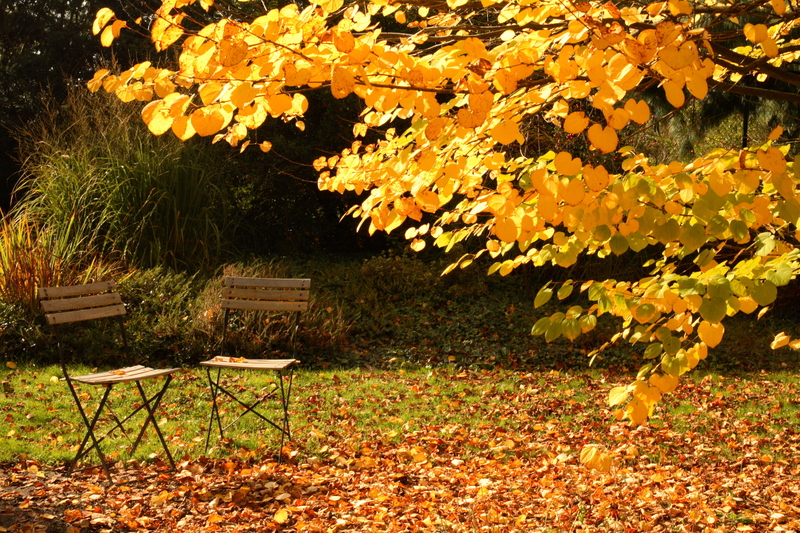How to Design Beautiful and Functional Garden Seating
Posted on 28/09/2025
How to Design Beautiful and Functional Garden Seating
Whether you have a sprawling backyard or a tiny urban oasis, incorporating garden seating can transform your outdoor space into a welcoming retreat. Designing beautiful and functional garden seating is about more than just putting down a bench; it requires careful thought about aesthetics, comfort, and how your seating will be used. In this comprehensive guide, we'll explore how you can create inviting, stylish, and practical outdoor seating that elevates your garden experience.

Why Garden Seating Matters
Garden seating does more than provide a place to rest; it anchors your landscape, encourages relaxation, and creates spaces for conversation, contemplation, and entertainment. Functional garden seating can enhance the versatility of your space, while a beautiful design ensures that your seating becomes a focal point, adding allure to your garden year-round.
- Encourages outdoor living: Comfortable seating beckons people outdoors.
- Enhances garden aesthetics: Stylish designs act as visual features.
- Supports socializing: Well-planned seating encourages gathering.
- Maximizes space: Versatile seating solutions make the most of available area.
Assessing Your Garden Space
Before choosing the perfect garden seating design, take a close look at your outdoor area. Consider the following factors:
1. Garden Size and Shape
The dimensions of your garden will influence the types and quantities of seating you can incorporate. For small gardens, compact and multi-functional seating is ideal. In larger spaces, you have the freedom to experiment with varied arrangements and larger pieces.
2. Sun and Shade Patterns
Observe how sunlight moves through your garden at different times of the day. Placing seating in the shade provides respite from heat, while sunny spots are perfect for sunbathing. Use pergolas, canopies, or natural tree cover to control light as needed.
3. Existing Landscape Features
Take note of trees, flower beds, ponds, and elevations. These features can offer natural backdrops or privacy screens for your seating areas, making them more inviting and secluded.
Choosing the Right Seating Style
Selecting the right type of outdoor seating is crucial for both comfort and style. Here are some popular choices:
- Benches: Classic and versatile, benches can be tucked into corners, placed against walls, or set around pathways.
- Chairs and Loungers: These offer personal comfort and are easy to move, making them ideal for flexible arrangements.
- Built-in seating: Integrated stone, wood, or concrete seats blend seamlessly with landscaping and provide a permanent solution.
- Swings and hammocks: For a touch of playfulness and relaxation, nothing beats a hammock under a shady tree.
- Modular seating: Sectional or modular units allow for customizable layouts, ideal for changing needs or gatherings.
Design Inspiration for Garden Seating
Draw inspiration from a variety of garden seating ideas:
- Rustic charm: Wooden log benches, natural stone seats, or upcycled materials integrate seamlessly with wild, cottage-style gardens.
- Modern minimalism: Sleek metal or concrete benches with clean lines offer contemporary appeal for urban spaces.
- Classic elegance: Ornate wrought-iron benches and chairs enhance traditional or formal garden layouts.
Material Matters: Selecting the Best Materials
The choice of materials for your outdoor seating affects longevity, comfort, and style. The ideal material should withstand weather, require minimal maintenance, and complement your garden's look.
Popular Materials for Functional Garden Seating:
- Teak and hardwoods: Durable, weather-resistant, and ages beautifully with a silvery patina.
- Metal: Aluminum and powder-coated steel are lightweight and rust-resistant; wrought iron is elegant but heavier.
- Stone and concrete: Permanent, sturdy, and naturally blends into the garden environment.
- All-weather wicker: Synthetic weaves mimic rattan style but withstand the elements.
- Recycled materials: Eco-friendly options, such as reclaimed wood or repurposed pallets, add character.
Tip: Choose cushions and fabrics labeled outdoor-grade for weather resistance and easy cleaning.
Comfort Is Key: Ergonomics and Layout
It's essential for garden seating to be as comfortable as it is attractive. Here are some tips for maximizing comfort and functionality:
- Seat height: Standard seat height is around 18 inches. Too low or high can be uncomfortable for longer periods.
- Backrests and armrests: Provide support and make seats inviting for all ages.
- Depth and width: Deeper seats are cozy, but ensure there's adequate back support.
- Cushions: Add softness with weatherproof cushions, throws, and pillows for extra coziness.
Optimizing Seating Arrangements
Arrange your garden seats to suit how you use your outdoor space. Consider:
- Conversation zones: Place seats facing each other to foster interaction.
- Solitude spots: Tuck a bench into a secluded corner for quiet moments with a book.
- Views and focal points: Orient seating to overlook flower beds, water features, or vistas.
Adding Style with Design Details
Functional and beautiful garden seating incorporates design elements that reflect your personality and complement your garden's theme. Some ways to do this include:
Color and Texture
- Paint or stain: Add vibrancy with color, or keep natural wood tones for a subtler look.
- Mix materials: Combine wood, metal, and fabric for visual interest.
- Patterned textiles: Cushions and throws in bold patterns can enliven neutral seats.
Accessories and Accents
- Outdoor rugs: Define a seating area and add soft underfoot comfort.
- Planters and pots: Enclose seating areas with lush container plants for intimacy.
- Lighting: Fairy lights, lanterns, or solar lamps enhance ambiance and extend usability into the evening.
Creating Privacy and Shelter
For truly enjoyable garden seating, consider how to provide privacy and protection from the elements:
- Trellises and screens: Use climbing plants or decorative screens to shield seating from neighbors or wind.
- Pergolas and gazebos: Permanent structures offer shade and shelter, making seating usable in all weather.
- Umbrellas and awnings: Flexible solutions for temporary shade.
Integrating Seating with Planting Schemes
A truly beautiful garden seating area feels connected to its living surrounds. Some ways to achieve this are:
Incorporate Nature Into Your Seating
- Built-in planters: Integrate raised beds or pots into seating for immersive greenery.
- Choose scented plants: Aromatics like lavender or jasmine enhance relaxation.
- Wildlife-friendly planting: Select flowers that attract birds and butterflies for a lively atmosphere.
Multi-Use and Space-Saving Solutions
If you're short on space, opt for functional garden seating that serves multiple purposes:
- Storage benches: Store cushions or garden tools within the bench itself.
- Moveable stools and poufs: Use as additional seating or side tables as needed.
- Foldable furniture: Perfect for compact gardens or flexible layouts.
Maintenance Tips for Long-Lasting Beauty
To keep your outdoor seating looking inviting year after year:
- Clean regularly: Wipe down furniture, wash cushion covers, and remove mold or algae promptly.
- Protect from the weather: Store cushions when not in use, and use furniture covers for harsh conditions.
- Oil or treat wood: Apply protective oil or stain annually to prolong wood's life.
- Inspect and repair: Tighten joints, check for rust or splinters, and repair damage promptly.

Garden Seating FAQs
What is the best placement for garden seating?
The best spot is one that offers both comfort and a pleasing view. Position seating near focal points like flower beds, ponds, or under an arbor. Ensure accessibility without interrupting garden pathways.
How do I make my garden seating more comfortable?
Add thick cushions, throws, and pillows made for outdoor use. Adjustable seat backs, footstools, and ergonomic shapes also increase comfort. Layering multiple elements creates a plush, inviting effect.
Can I design garden seating on a budget?
Absolutely! Upcycle pallets, old chairs, or concrete blocks for creative and affordable solutions. Repaint or update existing seats and use new outdoor cushions to refresh the look.
How do I protect garden seating from weather?
Choose weather-resistant materials, use covers, and store cushions during rain or off-season. Regularly clean and treat wood or metal surfaces to prevent decay.
Conclusion: Elevate Your Garden with Beautiful and Functional Seating
Designing beautiful and functional garden seating enhances every outdoor space - big or small. By combining aesthetics, comfort, and smart placement, you can create a space that's perfect for relaxation, socializing, and enjoying your garden's natural beauty. Take inspiration from your surroundings, choose materials wisely, and personalize your seating area - you'll soon have a garden that's as inviting as it is stunning.
Start planning your perfect garden seating design today and savor the joys of outdoor living in style!

